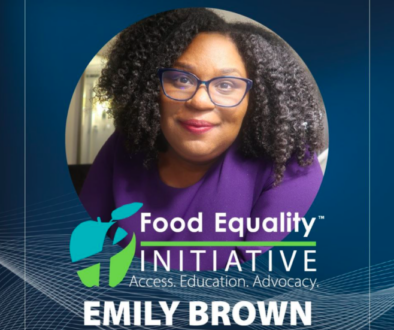12 Cooking Tips for Families With Food Allergies

Food Allergy-Friendly Kitchen Prep
If you’re new to food allergies, the task of safeguarding your home kitchen can be daunting. With a few straightforward considerations, however, you’ll be ready to cook allergy-friendly meals in no time.
1. Determine the severity of all food allergies in the household. This will help you figure out the degree to which you’ll need to safeguard your house from cross-contamination, according to Cybele Pascal. “If a member of your family is anaphylactic to even airborne traces of peanut, you will be sure to keep peanuts out of the house, and you will do everything in your power to be sure that nothing that’s cross contaminated by peanuts comes into your house. Other families are comfortable having an area of the pantry that is specifically labeled with ‘safe’ foods and utensils for the food allergic person.”
2. Consider a familywide allergy-friendly diet. Some parents find it easier to avoid cross-contamination by eliminating the allergen from the household, especially following the initial food-allergy diagnosis. “With my son, who has multiple food allergies, in the beginning, I just kept all the offending foods out of the house, and we all ate a completely allergy-free diet, which I found was the easiest way of handling it for me,” said Pascal. “Now, we do have some allergens in the house.”[/vc_column_text][/vc_column][vc_column width=”1/3″][vc_empty_space height=”20px”][ultimate_ctation ctaction_background=”#bcbcbc” ctaction_background_hover=”#bfbfbf” text_font_size=”13″]
Featured Food Allergy Experts
Kim Maes is a blogger and the creator of the Cook IT Allergy Free app for iPhone and iPad, which helps food-allergic cooks make safe ingredient substitutions. Her Twitter handle is @CookAllergyFree.
Cybele Pascal is an allergy-friendly chef, blogger and author of two allergen-free cookbooks for food-allergic households. Her Twitter handle is @CybelePascal.
Robyn O’Brien, a former Wall Street food industry analyst, is an author, speaker and founder of the AllergyKids Foundation. Her Twitter handle is @UnhealthyTruth.
Cast-iron cookware is a mainstay in many kitchens; however, Maes points out, “Because these are often meant to be seasoned, particles from previous meals involving allergens can remain on the surface.” In terms of cookware, Maes recommends stainless-steel pans that are dishwasher-safe, such as those from All-Clad, and cast-iron pans dedicated to only allergen-free food. “I leave a label on [the cast-iron pans] when I’m not using them in case someone else is cooking in my kitchen.” Maes’ kitchen also includes dishwasher-safe glass bakeware, stainless cooking utensils, dedicated silicone cooking utensils and a separate labeled toaster for gluten-free bread.
4. Invest in a smart selection of time-saving kitchen gadgets. Since preparing allergy-friendly food may entail a separate cooking process, head to your local kitchen supply store or restaurant supply store for products that can shave off some time. You don’t need to go overboard, however. “Your kitchen needs are no different from a non-food-allergic household,” says Pascal. “Except for the Magic Bullet, perhaps. This is a great way to make shakes for my food-allergic son.” Pascal also swears by her microplane, her mixing bowls from Crate and Barrel, and her Kitchen Aid stand mixer.
Avoiding Cross-Contamination
A well-stocked kitchen isn’t enough to safeguard your family from foods that could trigger an allergic reaction. You’ll also need to study up on cross-contamination, which may mean relearning several aspects of cooking at home.
5. Sanitize your hands, thoroughly and often. “I can’t stress how important this step is,” says Pascal. “Wash your hands between each step while prepping and cooking, with warm water and soap, and dry them on a clean paper towel or fresh dish towel.”
6. Clean and sanitize food-preparation areas before, during and after the cooking process. “Wash down kitchen surfaces. Don’t just wipe or brush them off — clean them thoroughly. I’m talking counters, cabinet knobs, the faucet and the surface of that salt shaker,” Pascal says. “Be sure that all equipment, pans and utensils have been thoroughly washed and sanitized before you use them.”
7. Assign dedicated “safe” shelves in your kitchen cabinet, pantry and refrigerator. “I separate shelves in my pantry and in my refrigerator to designate which foods are allergen-friendly and safe for the food-allergic family members,” says Maes. “This [method] is great for caregivers who may not be aware what is safe for your children to eat.”
8. Also assign dedicated “safe” kitchen appliances and utensils. Pascal recommends using separate cutting boards, with at least one that’s designated for preparing allergy-free meals. “You may also wish to have separate pans and utensils,” she adds. “More expensive, but less risky. Be sure to label them and keep them in a separate area when they’re not in use.” Pascal also advises parents to label and separate eating utensils for food-allergic individuals.
9. For households with wheat allergy or celiac disease, purchase a separate toaster for gluten-free bread. “If you use the same toaster for both gluten-filled and gluten-free bread, you are at a great risk for contamination,” warns Maes. Both Maes and Pascal recommend a separate toaster for gluten-free bread; if you don’t have the space or budget, Maes notes that the safest alternative is to place gluten-free bread on a piece of foil during toasting to avoid contact with gluten particles.
10. Time and prepare your meals so that the allergic person’s food is completed first. “Prepare the food-allergic person’s food first, and then cover it and set it aside to be sure nothing migrates into it. Serve the food-allergic person first to avoid cross-contamination from serving utensils,” says Pascal.
11. Educate the whole family on sanitation best practices. If you choose to have food allergens in your home, make sure your whole household remains vigilant on keeping “safe” items free of allergens. “If you have an egg allergy and someone dips his or her knife into the mayonnaise and then follows it up by dipping into the mustard, the mustard has now been contaminated with egg particles for any future uses,” warns Maes. The same goes for making peanut butter and jelly sandwiches, spreading jam on a piece of toast, or using any other condiment in the kitchen. “These minute amounts might seem insignificant; however, for someone with a life-threatening food allergy, they could spell disaster.”
Ensuring a Balanced Diet
12. Embrace whole, fresh foods. Since food-allergic individuals must cut so many foods out of their repertoire, many parents worry about proper nutrition and a balanced diet. Robyn O’Brien has a simple mantra to help: Eat Less Fake Food. Here’s O’Brien’s rationale behind this mantra:
We were feeding our kids blue yogurt, chicken nuggets, and mac and cheese when we first found out that our fourth child had food allergies. And then to learn that processed foods contain new allergens and proteins (not found in kids’ foods in other developed countries) that aren’t listed on the labels — what mom has time for that? So we decided to try to Eat Less Fake Food. And it goes such a long way in reducing your children’s exposure to hidden allergens, chemicals and preservatives now in the food supply that weren’t there when we were kids. Since 70 percent of a child’s immune system is found in his digestive tract, by simply eating less fake food, you are doing so much to ensure the health of a child and not corrode those digestive pipes with food pumped full of chemicals.
Originally published at CalorieLab.[/vc_column_text][/vc_column][/vc_row]


